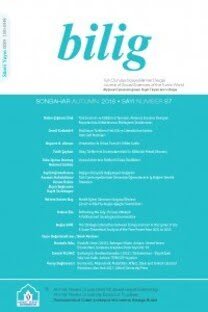Özbek Romanında Temsil Edilen Rus/Sovyet Tipler
Özbek romanında ortaya konmuş Rus ya da Sovyet tipler genelde edebî bir amacın ötesinde toplumsal ya da politik hedefler için bir araç olarak kullanılmışlardır. Bu tiplerin yüklendiği en önemli misyonlardan birisi ideal Özbek kimliğini yaratma amacı olmuştur. Bu tipler ya ideal bir medeniyetin ya da idealleştirilmiş bir ideolojinin temsilcileri rolünde Özbek halkına kopya edilebilecek birer kimlik örneği olarak sunulmuşlardır. Bazen de bu tipler, kolonize edilmiş bir ülkenin ya da coğrafyanın tarihini (mesela önce Rusya daha sonra ise Sovyetler tarafından kolonize edilen Özbekistan tarihi) yeniden okumak ve o tarihi yeni yüzü ile topluma sunarak kendisinden önce topluma empoze edilmiş ideal tiplerin ya da ideolojilerin yıkıcı yanını göstermek amacı ile yaratılmışlardır. Bu çalışmanın amacı ise yukarıda saydığım noktaları belirli edebî eserlerin tahlili sonucu ortaya çıkacak düşünceler vasıtası ile tespit etmektir.
Anahtar Kelimeler:
Özbek Romanı, tip, karakter, gelenek, gelenekçilik, modernlik, kolonyalizm, Oryantalizm
Russian or Soviet Characters in Uzbek Novels
In Uzbek novels, Russian or Soviet characters have generally been created not just for literary purposes, but they
have been employed as means for some social or political aims. One of the important roles that these characters have undertaken was the intention to create an ideal Uzbek identity. They have been presented to the Uzbek in order to be emulated for a better future nation as the representatives of either an ideal civilization or an idealized ideology (for example Communism). In some other cases, they have been created to provide an opportunity to be able to reread the history of a colonized nation and to unearth the destructive sides of these characters or ideologies hitherto imposed on Uzbek nation.
Keywords:
Uzbek novel, characters, tradition, traditionalism, Modernity, colonialism, Orientalism,
___
- AYBEK, Musataşmuhammedoğlu (1976), Kutlu Kan, Taşkent: Özbekistan Fen Neşriyatı.
- BROWER, R. Daniel and LAZZERENİ, J. Edward (1997), Russia’s Orient: Imperial Borderlands and Peoples, 1700-1917, Bloomington: Indiana University Press.
- CLARK, Katerina (2000), The Soviet Novel: History as Ritual, Bloomington: Indiana University Press.
- DELANTY, Gerard (2000), Modernity and Postmodernity, London, Thousand Oaks, New Delhi: Sage Publications.
- FANON, Frantz (1967) , Toward the African Revolution , Harmondsworth: Pelican.
- FİSCHER, Ernst (1987), Sanatın Gerekliliği, (çev. Cevat Çapan), Ankara: Kuzey yayınları
- HİKMET, Nazım (2002), Kemal Tahir’e Mapusaneden Mektuplar, İstanbul: Tekin Yayınevi.
- KADİRİ, Abdullah (1994) Geçmiş Günler, Tashkent.
- KHALİD, Adeeb (1998), The Politics of Muslim Cultural Reform, Los Ange- les: University of California Press.
- KİPLİNG ,Rudyard (1954), Nazım, Garden City, NY.: Doubleday and Co.
- MURPHY, Christopher (1992), “Abdullah Qadiriy and the Bolsheviks: From Reform to Revolution,” Muslims in Central Asia: Expression of Identity and Change, ed. Jo-Ann Gross, (Durham and London: Duke University Press,.
- OTKIR, Haşimov (1994), Düşte Geçen Ömürler, Taşkent: Şark Matbaası.
- SAİD, Edward (1991), Oryantalizm, Sömürgeciliğin Keşif Kolu, (çev. Selahaddin Ayaz), İstanbul: Pınar Yayınları.
- WELLEK, René & WARREN, Austin (1977), Theory of Literature, San Diego, New York, London: A Harvest/HBJ Book.
- Bu 1 Mesela 3 Kanon
- 8 6 Daha 4 Sınırları 3 Kanon 5 Bu eser 5 Bu eser 7 Sart 5 Bu eser 7 Sart 5 Bu eser 9Burada . 9Burada . 11 “ 9Burada .
- ISSN: 1301-0549
- Yayın Aralığı: Yılda 4 Sayı
- Başlangıç: 1996
- Yayıncı: Ahmet Yesevi Üniversitesi
Sayıdaki Diğer Makaleler
Biyografik Bilgi ve Şiir Eleştirisi Açısından “Çehâr Makâle”
Günümüz Uygur Aile Yapısındaki Gelişmeler
Özbek Romanında Temsil Edilen Rus/Sovyet Tipler
Samed Vurgun’un Bakış Açısıyla On Bir Türk Şairi
Kızılırmak ve Fırat Havzalarını Birbirine Bağlayan Eski Kervan Yolları
Türkçe’nin ‘Banyo’ Karşılığında Bilinen İlk Sözcüğü: Sukıngu
Atatürk Döneminde Kemalist Metinler: A’râfda Bir Kemalizm: Tekin Alp ve Kemalizm (1936)
Aleksey İvanoviç (Kutlu Muhammet) TEVKELEV (Şeceresi, İdil-Yayık ve Kazak Tarihindeki Rolü)
